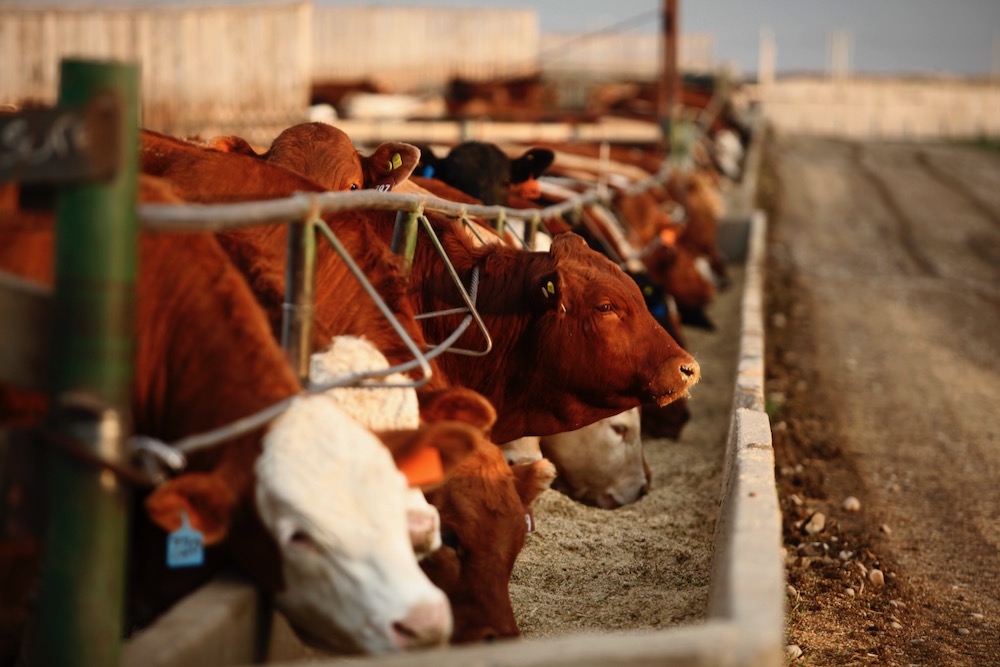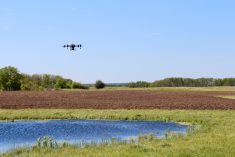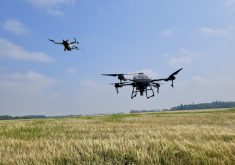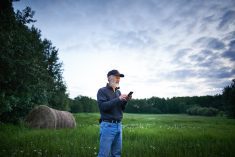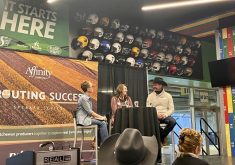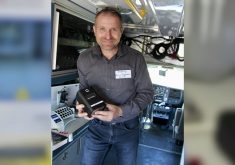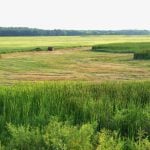Jack Behan combined his company, Alpha Phenomics, with HerdWhistle in 2023, for a clear reason.
“When we put the businesses together, we only had one thing in mind, which was global domination,” he says.
HerdWhistle was started in 2019 to monitor the feeding and drinking of an entire feedlot, 24/7. Using ultra high-frequency (UHF) and RFID ear tags, HerdWhistle created the longest RFID antenna in the world to monitor the entire feedlot.
Read Also
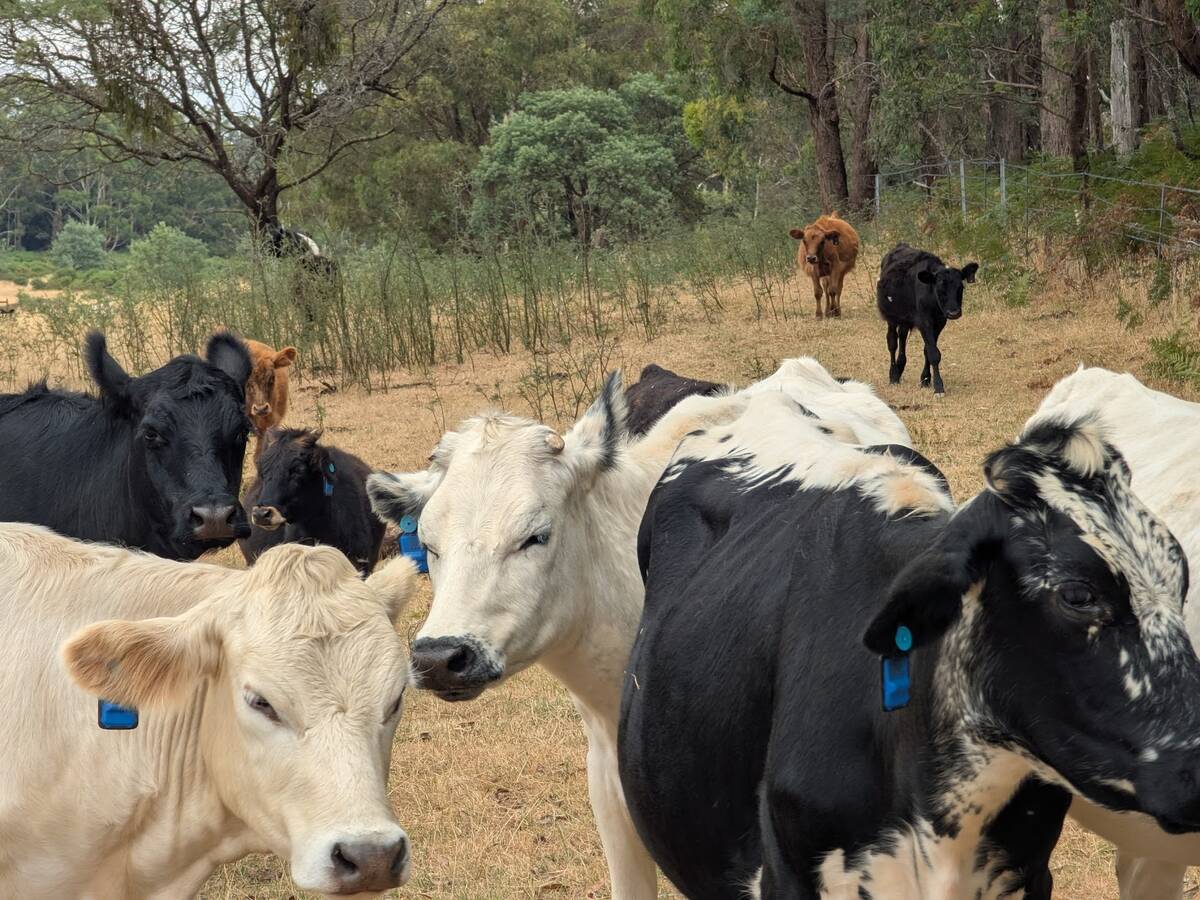
Australian company brings ear-tag tech to Canadian pastures
With Smart Paddock, beef farmers and ranchers can track their cattle through GPS technology
Behan, now CEO of HerdWhistle, says HerdWhistle had a lot of talented engineers and an operational platform in the feedlot space, but the company was missing highly educated scientists in the animal science sphere. Alpha Phenomics brought those people to the table.
Braden Bjornson, the chief experience officer at HerdWhistle, says having those types of experts at their company is changing the game for HerdWhistle.
“I come from a family of farmers as well,” Bjornson says. “And they’re like, ‘Yeah, we’ve tried every tech, but we’re back to the same thing we’re doing today.’ So it’s just a bunch of noise… But the differentiator is with Alpha Phenomics and Jack’s side. If you look at the advisory board and the team that he brings, these are all PhDs in animal science. So there’s that legitimacy behind it. We’re not just creating things in our garage.”
With the merger of Alpha Phenomics with HerdWhistle, the company is busy rolling out new products.
UHF tech
Most of HerdWhistle’s products use UHF or RFID tag technology.
Behan says he believes there is a big opportunity in the industry with UHF technology. He says because all of a producer’s cattle in Canada are outside, UHF needs to be prioritized over low frequency.
“We also see a huge disparity between what farmers need in Canada and what people like the (Canadian Cattle Identification Agency) are advocating, which is sticking to short range,” Behan says. “It’s just not of interest practically if you have animals outside.
“We are pushing these different places like the Canadian Cattle Identification Agency and other people that we’re talking to with new ways to think about technology,” Bjornson says. “And it’s catching on because they keep coming back to us with more tag orders, more questions.”
Behan says when it comes to the work HerdWhistle is doing, the main goal is to minimize the amount of labour producers must do on their operations.
“You’re trying to remove labour all the time because nobody wants to work on farms anymore,” he says. “We have to be really looking at how we can reduce, not add, labour.”
Animal health
Behan says a benefit of UHF and RFID technologies is that they can be used to identify illnesses in cattle.
In the feedlot, water trough and feed bunk sensors track each animal’s ear tag as it eats or drinks, notes the HerdWhistle website. According to the website, with the extra-long RFID antenna, the system can detect early signs of illness before a calf succumbs to the disease. Because cattle don’t eat or drink at the same frequency they would if they were healthy, they’re easy to pick out as sick.
Behan says while this technology can minimize the labour of producers and other professionals such as pen riders, it also is more efficient.
“Often the poor guys have got 15,000 animals, or whatever it is, 300 a pen. And they probably see animals far too late to make a difference if those animals are sick,” Behan says.
“So what we have now is a system that identifies an animal as sick, and then it also tells the pen rider which pen it’s in. And then with the ability we’ve got through mobile phones, they can actually track it with the antenna, where the animal is within the pen.”
In 2024, HerdWhistle will also be releasing new technology that focuses on identifying illness in livestock.
Eye on cattle
One of HerdWhistle’s newest technologies is known as the BigEye, a product that contains a multispectral camera and built-in UHF tag readers.
Behan says the BigEye can scan the animal and get its measurements. The camera also contains a thermal technology that can detect the heat output from the animal.
Behan explains that infrared thermographic imaging is primarily used to indicate if the animal is sick. He says the BigEye focuses on the eye of the animal because the eye is the most sensitive to heat in the body. He says the BigEye would be able to identify illness in animals up to six days before a person would usually notice it.
“When you have a cold, what generally happens is your eyes water, you get a stuffy nose. And that’s because the heat has been generated in your head. Exactly the same with cattle, pigs, sheep, goats, whatever. Then it says this animal is outside the normal range, it’s at risk.”
The BigEye will cost around $1,500 to purchase, with a $700 subscription fee to follow every month. However, Behan says the price would be offset by how much he believes producers would save treating their herd.
“Instead of spending $40 or whatever it is on an antibody cocktail, you spend on average $4 because you’ve only got one in 10 that is sick. And you start to do things that are adding up,” Behan says.
CattleShield
HerdWhistle also has a virtual fence, known as CattleShield, which sets the virtual fence using GPS. Cattle wear collars that emit a sound when they get close to the fence, then a shock. The batteries are solar charged and can last up to nine months.
Behan says they wanted to create a virtual fence made for, and in, Canada, designed for the needs of the Canadian landscape. The initial study was funded by the B.C. government to try to prevent forest fires. The goal was to use virtual fence to get cattle close to the brush under trees so they could graze it down.
“The problem when you tried to move those systems to Canada is you haven’t got internet here,” Behan says with a laugh.
Behan says their collars connect to satellites. From there, producers can move their cattle with the virtual fence from their phones.
This is similar to the NoFence brand of collars, based out of Norway. This type of virtual fencing collar requires only a cellular network and an app on the producer’s phone to monitor and move their virtual fence. The main difference is that HerdWhistle’s virtual fence may be better suited to producers in areas that struggle with cellphone connectivity, as their collars connect through satellite.
Behan says now that the study is done, they are waiting for groups they’ve reached out to, such as RDAR, to come into the project with them and provide funding. After that, he says the plan is to manufacture 100 collars.
Future products
Since Behan’s company merged with HerdWhistle, it’s been full steam ahead. The company is making new products that use the skills of both Behan’s researchers and the engineers at HerdWhistle.
One of those products is the LittleEye, a smaller, handheld version of the BigEye intended for smaller producers.
Behan says the LittleEye will recognize eight species of animals, including cattle, dogs and cats, plus humans. This means people can identify illness not only in their livestock, but in their pets.
“Often where we live in rural communities, we want to know whether or not we should go into town and take the dog in for something wrong,” Behan says, acknowledging diagnosing illness is not just about temperature. “But the idea of being able to give a biosurveillance check on your animals before you spend that money can be very comforting.”
Behan says they are also making large investments in the plastics machine in their Calgary shop that produces ear tags. He says the goal is to be able to produce 86,000 tags per day. However, this will require a large investment.
“We’re going into ultra-high-frequency tags. And we’re going into genomic tags, so the concept of being able to take genomic samples every time I tag an animal that can be stored in nitrogen so that we can do genomic testing. We see that as a big area. We also see ultra-high-frequency tags as a big area,” Behan says.


